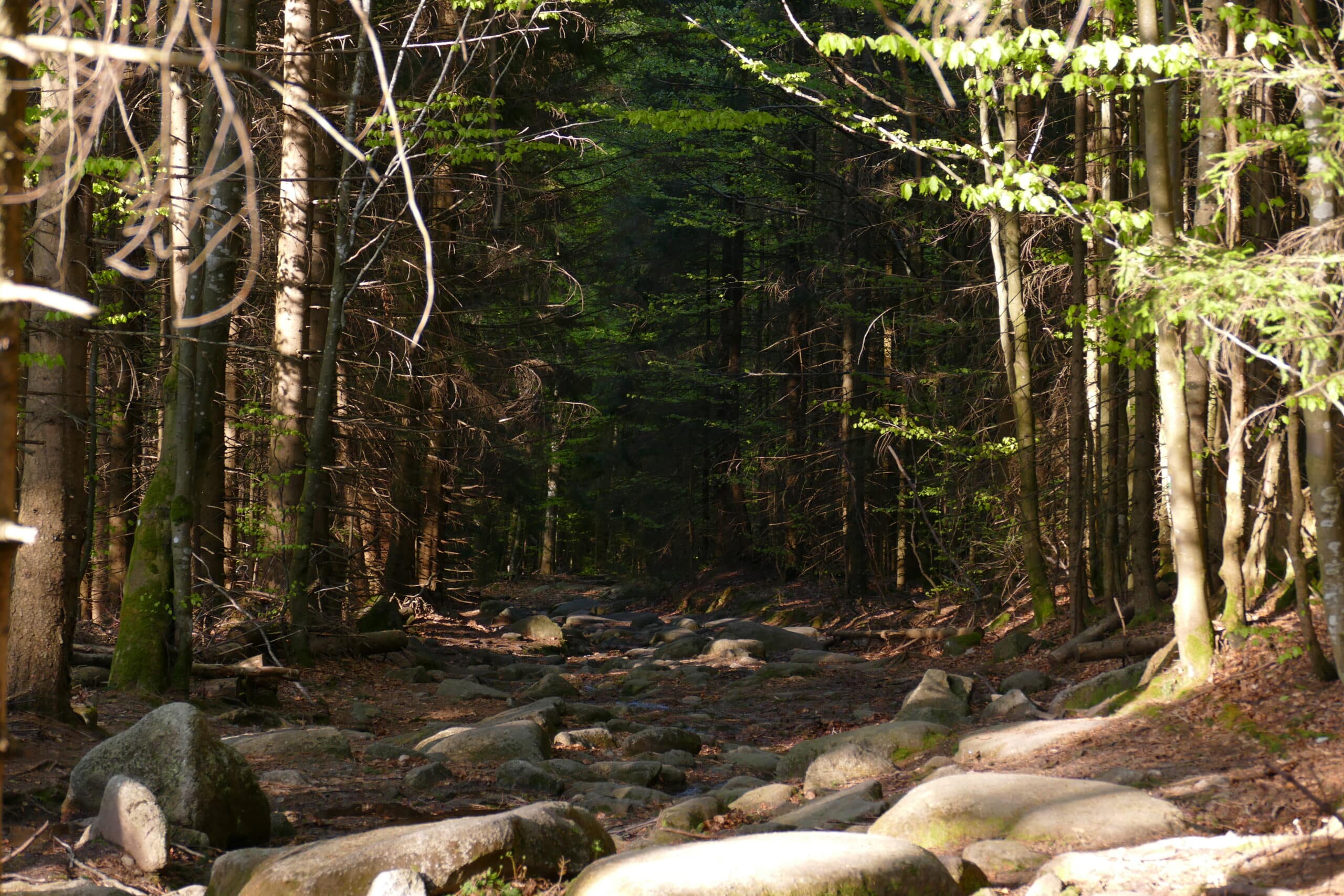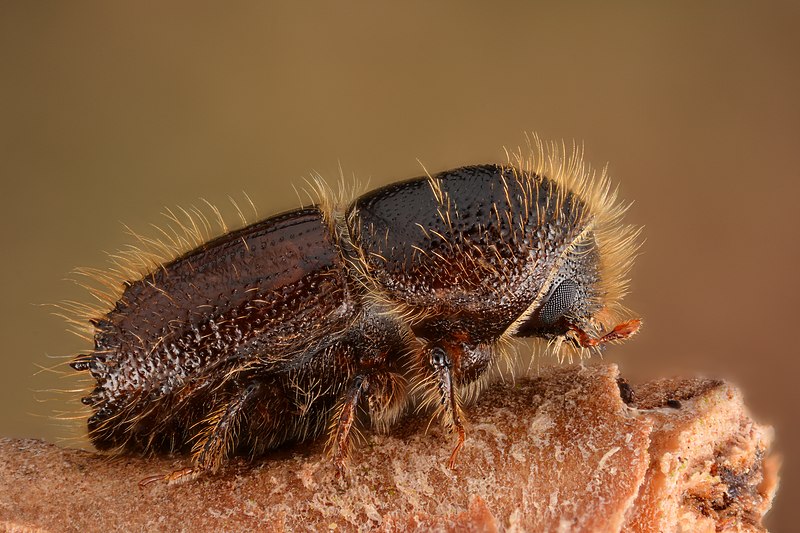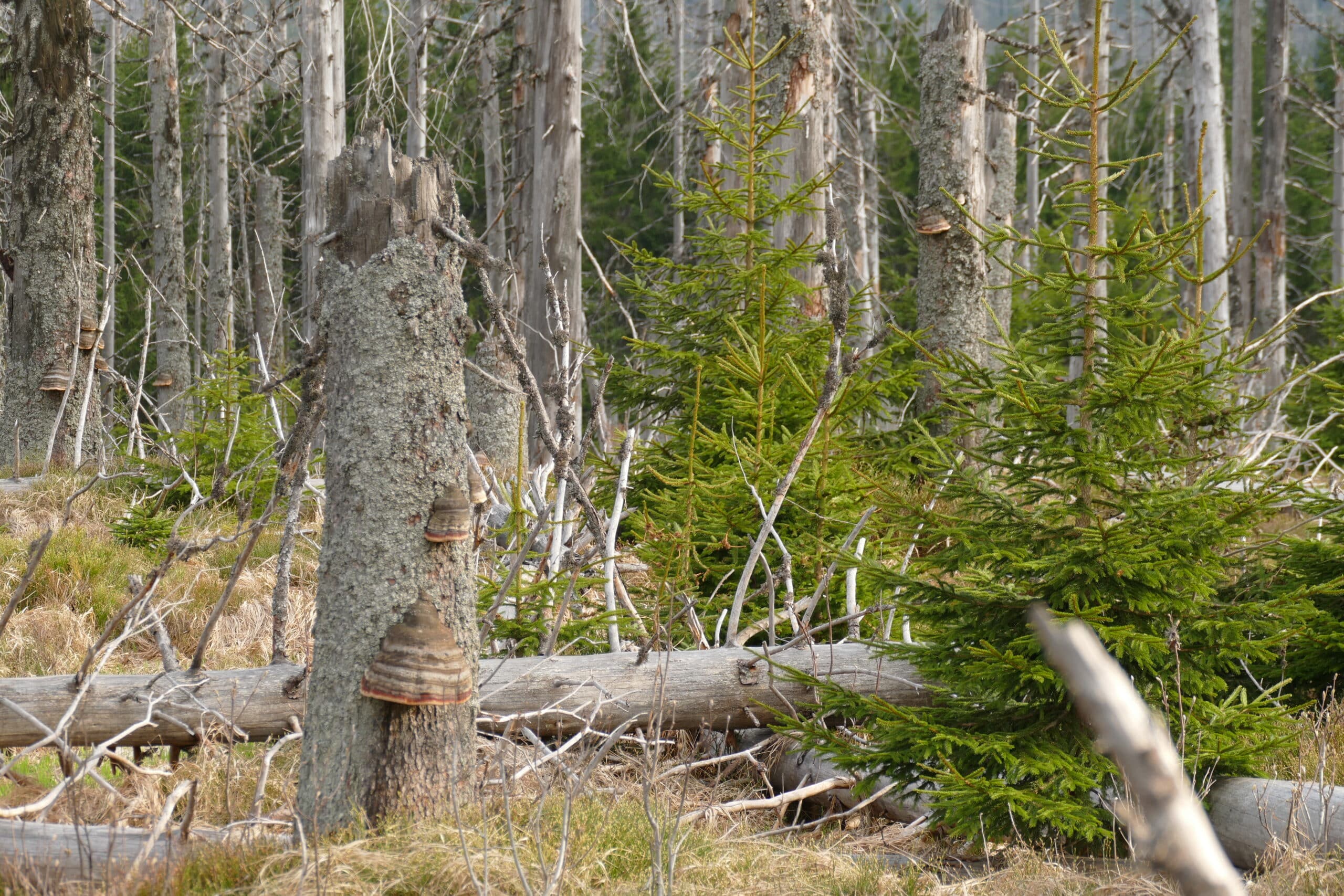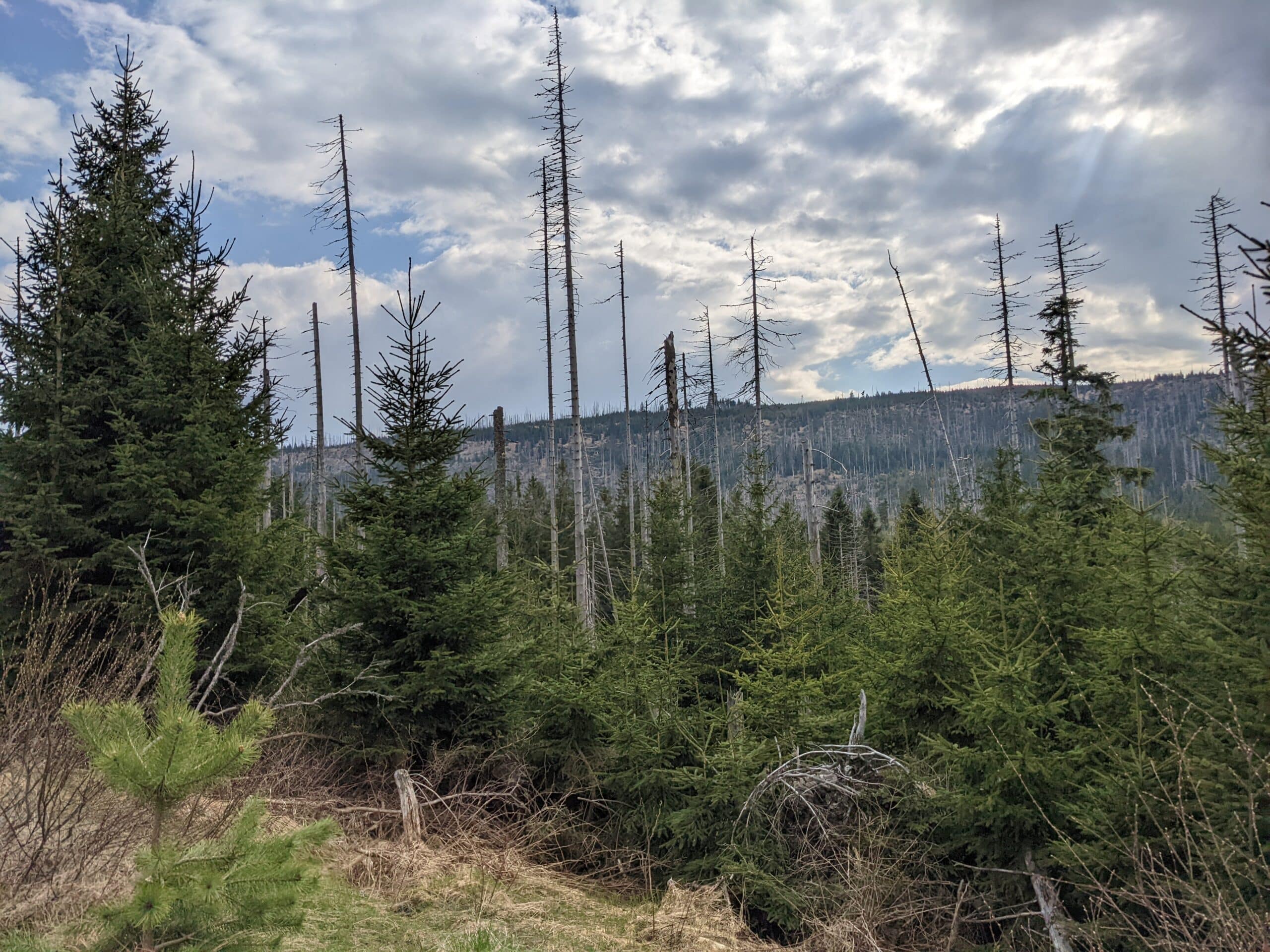The Czech Šumava National Park celebrated its 30-year anniversary in 2021. In those thirty years, society has changed a lot. As has healthcare, education and forestry, and of course nature protection.
Today, Šumava National Park has a strong focus on wilderness. Giving nature freedom and not interfering in its processes. An approach that is still somewhat debated in the nature protection field, at least when it comes to the question: to what scale should we not intervene?

Sumava National Park. Photo credits: Biking4Biodiversity
The spruce bark beetle – the forest’s engineer
Do you know the spruce bark beetle? This creature, which is only a few centimetres long, is a major driver of everything happening in Šumava. It transformed the landscape multiple times within a few years, affecting the lives of many animals and people.
The spruce bark beetle lives in weakened, dying or dead spruce trees. First, the male attacks the tree. Subsequently, with the help of a pheromone, they attract females and mate with them. As the larvae develop in the trunk, they spend their time feeding between the bark and the wood. The larvae become pupae and their development continues until the adult stage, when they fly out and attack other trees. This process takes about four to six weeks, depending on the weather.

The European spruce bark beetle. Photo credits: Gilles San Martin
To act or not to act – this is the question
Man is a creature who likes order. But nature has no order in our sense of the word, and if we want to effectively protect it, we have to play by its rules.
If you spent time in your youth visiting forests planted by humans, you may have been accustomed to trees planted nicely in rows, in precise geometric shape. Clearings in a commercial forest are intentional, and are soon replanted again. When spruce bark beetles hit these forests, foresters must immediately react to prevent spreading. So why should it be different in protected areas, such as Šumava?
In Šumava, the native spruce is the dominating species of the forests. And consequently, spruce bark beetle outbreaks have fundamentally changed the landscape of this region. In 1984, before the National Park was founded, there was a big storm in the area, followed by a bark beetle outbreak. This evoked immediate reaction by foresters. Half a million sick and dead trees were felled, removed, the clearings were reforested – no damage in sight.
After the establishment of the park in 1991, several further major bark beetle outbreaks took place. Foresters working in Šumava, as well as external experts back were quick to express their opinion: ‘The forests need human help. We have to cut down infected trees for the forest to survive, otherwise the whole forest will be gone.’ After every big outbreak, the park administration was faced with the same question: do they stop the spread of bark beetles, or do they explore where the natural processes lead?

The dead spruce trees are very important sources of nutrients for many species living in the forest. Photo credits: Biking4Biodiversity
Start of the biomonitoring
After 2007, the national park administration finally decided to increase the non-intervention zone from 13% to 24%. They also started monitoring what is happening to the forest in this zone: the pace of natural rejuvenation, the amount of dead wood and composition of species. They found that the natural rejuvenation density was significantly higher than what was planted by humans to aid the forest.
When you pass through Šumava, you can see the standing dead spruces as white poles reaching high in the sky, reminding us of the majestic, healthy, green spruces that once were in their place. At first glance, one might see only a desolate plain. However, beneath them, there is a growing density of trees that have been patiently waiting for their chance to reach the sunlight. The new forest is in sight.

Trees waiting for their chance to reach the sunlight. Photo credits: Biking4Biodiversity
A dynamic forest wilderness
In the 30 years of the history of Šumava National Park, nature itself and society have shown that they can fulfil the idea of wilderness. It turned out that protecting only a certain image, conserving a specific scenery is not actually possible. Much of the human intervention intended as help eventually led not only to the destruction of this scenery, but also its natural life story. As spruce has always naturally prevailed in the forests of Šumava, the bark beetle was always been present there as well, shaping the forest. Therefore, spruce bark beetles, together with the other two native bark beetle species, belong to Šumava. And the forests of Šumava have shown that they can do without human help.
Today, Šumava National Park not only gives space to natural processes, but also encourages its visitors to join this observation of life and death, of at times small and at other times grand transformations in the landscape and learn to appreciate the dynamics of nature.

